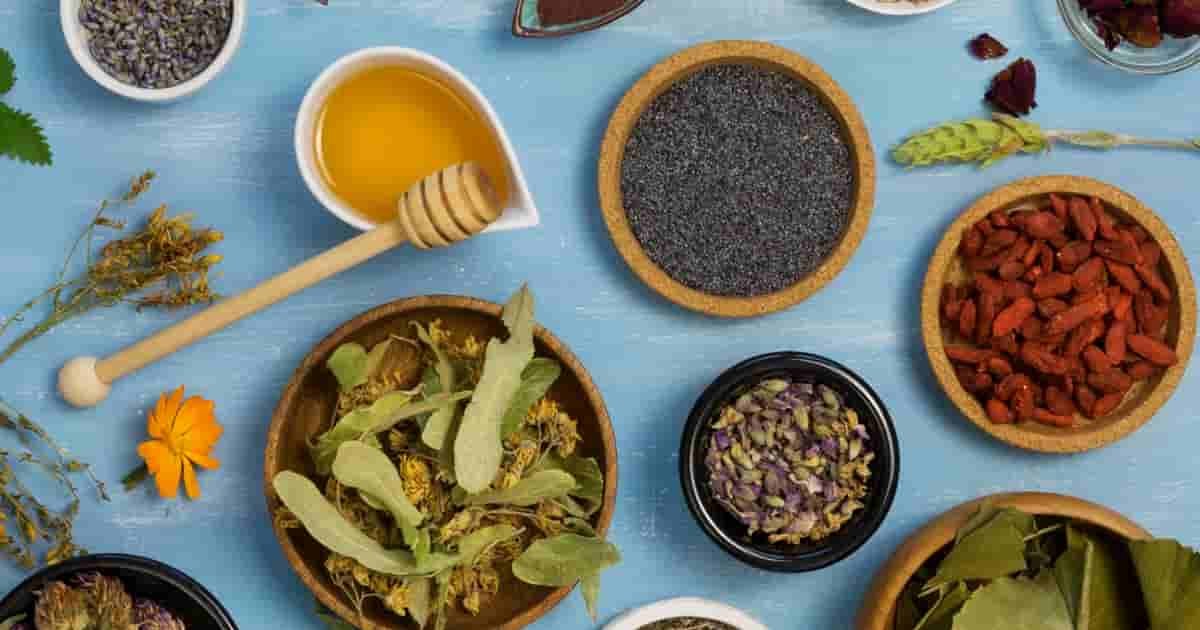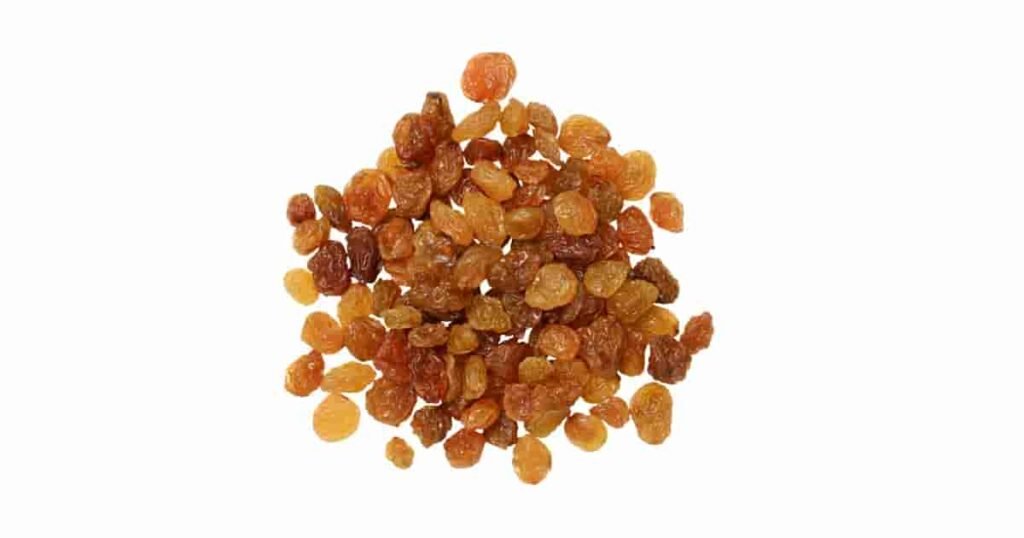The 15 Most Important Ayurvedic Herbs: A Journey into Ancient Healing
Ayurveda, the “Science of Life,” is an ancient Indian system of medicine that emphasizes holistic well-being. It believes that health is achieved by balancing the three fundamental energies or doshas – Vata, Pitta, and Kapha – within the body. Herbs play a crucial role in Ayurvedic healing, acting as powerful tools to restore balance, promote vitality, and prevent disease.
Navigating the vast world of Ayurvedic herbs can be overwhelming. This post will delve into 15 of the most important and widely used herbs, providing insight into their properties, benefits, and traditional uses. Consider this a starting point for your Ayurvedic journey, and always consult with a qualified practitioner before incorporating any new herbs into your routine.
Important Ayurvedic Herbs

1. Ashwagandha (Withania somnifera): The Adaptogenic Powerhouse
Ashwagandha, often referred to as the “Indian Ginseng,” is arguably the most well-known Ayurvedic herb. It’s a powerful adaptogen, meaning it helps the body adapt to stress and maintain homeostasis.

- Key Properties: Warming, grounding, and nourishing. It has sweet and bitter tastes.
- Benefits:
- Stress Reduction: Ashwagandha helps lower cortisol levels, reducing feelings of anxiety and stress.
- Improved Energy: It boosts energy levels without causing jitters, making it a beneficial herb for fatigue and weakness.
- Enhanced Cognitive Function: Studies suggest it can improve memory, concentration, and focus.
- Immune Support: Ashwagandha supports a healthy immune system by modulating immune responses.
- Sleep Aid: It promotes restful sleep and can alleviate insomnia.
- Hormonal Balance: It’s often used to support healthy thyroid function and regulate hormones.
- Dosha Impact: Primarily balances Vata and Kapha, and can aggravate Pitta if taken in excess.
- Traditional Uses: Traditionally used as a rejuvenative tonic (Rasayana) to promote longevity and vitality.
2. Triphala: The Gentle Detoxifier and Digestive Aid
Triphala, meaning “three fruits,” is a combination of Amalaki (Emblica officinalis), Bibhitaki (Terminalia bellirica), and Haritaki (Terminalia chebula). This powerful blend is renowned for its gentle detoxification and digestive properties.

- Key Properties: Balancing for all three doshas (Vata, Pitta, and Kapha), mildly laxative, and rejuvenative. It has a sour, sweet, bitter, pungent, and astringent taste.
- Benefits:
- Digestive Support: Triphala promotes healthy digestion, relieves constipation, and improves nutrient absorption.
- Detoxification: It gently detoxifies the colon and cleanses the digestive tract, removing accumulated toxins.
- Antioxidant Properties: Triphala is rich in antioxidants, protecting the body from free radical damage.
- Immune Support: It strengthens the immune system and promotes overall well-being.
- Eye Health: Some studies suggest it can improve eye health and vision.
- Dosha Impact: Considered tridoshic, meaning it balances all three doshas. However, high doses may slightly aggravate Vata.
- Traditional Uses: Used as a daily rejuvenative tonic and a gentle laxative.
3. Turmeric (Curcuma longa): The Anti-Inflammatory King
Turmeric, with its vibrant yellow color, is a staple in Ayurvedic medicine and Indian cuisine. Its active compound, curcumin, is responsible for its potent anti-inflammatory and antioxidant properties.
- Key Properties: Warming, drying, and anti-inflammatory. It has a pungent and bitter taste.
- Benefits:
- Anti-Inflammatory: Curcumin helps reduce inflammation throughout the body, which is linked to numerous chronic diseases.
- Antioxidant: Turmeric protects against free radical damage, supporting cellular health.
- Joint Health: It relieves joint pain and stiffness, making it beneficial for arthritis and other inflammatory conditions.
- Brain Health: Studies suggest curcumin may improve brain function and protect against neurodegenerative diseases.
- Immune Support: Turmeric boosts the immune system and helps fight infections.
- Skin Health: It promotes healthy skin and can be used to treat various skin conditions.
- Dosha Impact: Primarily balances Kapha and Pitta, and can aggravate Vata in large doses.
- Traditional Uses: Used for wound healing, pain relief, digestive disorders, and skin conditions.
4. Ginger (Zingiber officinale): The Warming Digestive Fire
Ginger is a warming and stimulating herb that’s widely used in Ayurveda for its digestive and anti-inflammatory properties.
- Key Properties: Warming, pungent, and stimulating.
- Benefits:
- Digestive Aid: Ginger stimulates digestive fire (Agni), promoting healthy digestion and relieving indigestion, bloating, and nausea.
- Anti-Inflammatory: It reduces inflammation and pain, particularly in the joints and muscles.
- Immune Support: Ginger strengthens the immune system and helps fight off infections.
- Circulation Booster: It improves blood circulation, promoting warmth and energy.
- Motion Sickness Relief: Ginger is effective in preventing and treating motion sickness.
- Dosha Impact: Primarily balances Vata and Kapha, and can aggravate Pitta if taken in excess.
- Traditional Uses: Used for digestive issues, respiratory problems, pain relief, and stimulating circulation.
5. Brahmi (Bacopa monnieri): The Brain Booster
Brahmi, also known as Bacopa, is a powerful nootropic herb traditionally used in Ayurveda to enhance cognitive function and promote mental clarity.

- Key Properties: Cooling, nourishing, and rejuvenative. It has a bitter and astringent taste.
- Benefits:
- Cognitive Enhancement: Brahmi improves memory, learning, and concentration.
- Stress Reduction: It reduces anxiety and stress, promoting a sense of calm.
- Neuroprotective: It protects brain cells from damage and may help prevent age-related cognitive decline.
- Sleep Aid: Brahmi promotes restful sleep and can alleviate insomnia.
- Dosha Impact: Primarily balances Vata and Kapha, and can slightly aggravate Pitta in some individuals.
- Traditional Uses: Used to improve memory, concentration, and mental clarity, particularly in students and the elderly.
6. Gotu Kola (Centella asiatica): The Longevity Herb
Gotu Kola is another powerful herb with significant cognitive benefits. It’s known for its ability to improve circulation, promote wound healing, and enhance overall well-being.
- Key Properties: Cooling, calming, and rejuvenative. It has a bitter and astringent taste.
- Benefits:
- Cognitive Enhancement: Gotu Kola improves memory, learning, and mental clarity.
- Wound Healing: It stimulates collagen production, promoting faster wound healing.
- Circulation Booster: It improves blood circulation, reducing swelling and promoting healthy veins.
- Skin Health: Gotu Kola promotes healthy skin and can be used to treat various skin conditions.
- Stress Reduction: It reduces anxiety and stress, promoting a sense of calm.
- Dosha Impact: Balances all three doshas (Vata, Pitta, and Kapha).
- Traditional Uses: Used to improve memory, promote longevity, heal wounds, and treat skin conditions.
7. Neem (Azadirachta indica): The Purifying Bitter Herb
Neem is a potent detoxifying and purifying herb with strong antibacterial, antiviral, and antifungal properties.
- Key Properties: Cooling, drying, and bitter.
- Benefits:
- Detoxification: Neem purifies the blood and removes toxins from the body.
- Skin Health: It treats various skin conditions, including acne, eczema, and psoriasis.
- Immune Support: Neem strengthens the immune system and helps fight infections.
- Antifungal and Antibacterial: It inhibits the growth of bacteria, viruses, and fungi.
- Dosha Impact: Primarily balances Pitta and Kapha, and can aggravate Vata if used excessively.
- Traditional Uses: Used for skin conditions, infections, detoxification, and immune support.
8. Licorice Root (Glycyrrhiza glabra): The Soothing and Nourishing Herb
Licorice root is a sweet and soothing herb that’s beneficial for the digestive system, respiratory system, and adrenal glands.
- Key Properties: Cooling, moistening, and sweet.
- Benefits:
- Digestive Support: Licorice root soothes the digestive tract and relieves indigestion, heartburn, and ulcers.
- Respiratory Support: It soothes the throat and relieves coughs, colds, and bronchitis.
- Adrenal Support: Licorice root helps support healthy adrenal function, reducing stress and fatigue.
- Anti-Inflammatory: It reduces inflammation throughout the body.
- Dosha Impact: Primarily balances Pitta and Vata, and can aggravate Kapha if taken in excess.
- Traditional Uses: Used for digestive issues, respiratory problems, adrenal support, and soothing inflammation. Caution: People with hypertension should use licorice root with caution due to its potential to raise blood pressure.
9. Shatavari (Asparagus racemosus): The Female Rejuvenative Herb
Shatavari is a key herb in Ayurvedic medicine, particularly for women’s health. It is considered a rejuvenative tonic (Rasayana) and is known for its nourishing and balancing properties.
- Key Properties: Cooling, moistening, and sweet.
- Benefits:
- Female Reproductive Health: Shatavari supports healthy menstruation, fertility, and lactation.
- Hormonal Balance: It helps regulate hormones and alleviate symptoms of menopause.
- Digestive Support: Shatavari soothes the digestive tract and relieves indigestion and bloating.
- Immune Support: It strengthens the immune system and promotes overall well-being.
- Dosha Impact: Primarily balances Vata and Pitta, and can aggravate Kapha in some individuals.
- Traditional Uses: Used for female reproductive health, hormonal balance, digestive issues, and immune support.
10. Tulsi (Ocimum sanctum): The Holy Basil
Tulsi, also known as Holy Basil, is a sacred herb in India with potent adaptogenic, antioxidant, and immune-boosting properties.
- Key Properties: Warming, pungent, and aromatic.
- Benefits:
- Stress Reduction: Tulsi helps the body adapt to stress and reduce anxiety.
- Immune Support: It strengthens the immune system and helps fight off infections.
- Antioxidant: Tulsi protects against free radical damage, supporting cellular health.
- Respiratory Support: It relieves coughs, colds, and congestion.
- Dosha Impact: Primarily balances Kapha and Vata, and can aggravate Pitta if taken in excess.
- Traditional Uses: Used for stress relief, immune support, respiratory problems, and promoting overall well-being.
11. Amalaki (Emblica officinalis): The Vitamin C Powerhouse
Amalaki, also known as Indian Gooseberry, is one of the richest natural sources of Vitamin C. It’s a powerful antioxidant and rejuvenative herb.
- Key Properties: Cooling, sour, and astringent.
- Benefits:
- Antioxidant: Amalaki protects against free radical damage, supporting cellular health.
- Immune Support: It strengthens the immune system and helps fight off infections.
- Digestive Support: Amalaki promotes healthy digestion and improves nutrient absorption.
- Skin and Hair Health: It promotes healthy skin and hair growth.
- Dosha Impact: Balances all three doshas (Vata, Pitta, and Kapha).
- Traditional Uses: Used for immune support, digestive issues, skin and hair health, and promoting overall well-being. It’s a key ingredient in Triphala.
12. Bibhitaki (Terminalia bellirica): The Detoxifying Fruit
Bibhitaki is another powerful herb that’s part of the Triphala formula. It’s known for its detoxifying and rejuvenative properties, particularly for the respiratory system.
- Key Properties: Cooling, astringent, and drying.
- Benefits:
- Detoxification: Bibhitaki helps remove toxins from the body, particularly from the respiratory system.
- Respiratory Support: It supports healthy lung function and relieves coughs and congestion.
- Digestive Support: It promotes healthy digestion and eliminates waste.
- Dosha Impact: Primarily balances Kapha, and can aggravate Vata if used excessively.
- Traditional Uses: Used for detoxification, respiratory problems, and digestive issues.
13. Haritaki (Terminalia chebula): The King of Herbs
Haritaki is the third and final fruit in the Triphala formula, often considered the “King of Herbs” in Ayurveda due to its wide range of health benefits.
- Key Properties: Warming, astringent, and rejuvenating.
- Benefits:
- Digestive Support: Haritaki promotes healthy digestion and regular bowel movements.
- Detoxification: It gently detoxifies the body and removes accumulated toxins.
- Anti-Aging: Haritaki is a powerful rejuvenative that promotes longevity and vitality.
- Immune Support: It strengthens the immune system and promotes overall well-being.
- Dosha Impact: Balances all three doshas (Vata, Pitta, and Kapha) when used appropriately.
- Traditional Uses: Used for digestive issues, detoxification, anti-aging, and immune support.
14. Guggulu (Commiphora mukul): The Resin for Detoxification and Joint Health
Guggulu is a resin extracted from the Commiphora mukul tree, prized in Ayurveda for its detoxifying and anti-inflammatory properties.
- Key Properties: Warming, pungent, and bitter.
- Benefits:
- Detoxification: Guggulu helps remove toxins from the body, particularly from the blood.
- Joint Health: It reduces inflammation and pain in the joints, making it beneficial for arthritis.
- Weight Management: Guggulu supports healthy metabolism and may aid in weight management.
- Cholesterol Management: Some studies suggest it can help lower cholesterol levels.
- Dosha Impact: Primarily balances Vata and Kapha, and can aggravate Pitta if taken in excess.
- Traditional Uses: Used for detoxification, joint pain, weight management, and cholesterol management.
15. Boswellia (Boswellia serrata): The Joint Pain Reliever
Boswellia, also known as Indian Frankincense, is a resin with potent anti-inflammatory properties, making it a popular choice for joint pain relief.
- Key Properties: Warming, bitter, and astringent.
- Benefits:
- Joint Health: Boswellia reduces inflammation and pain in the joints, making it beneficial for arthritis and osteoarthritis.
- Anti-Inflammatory: It reduces inflammation throughout the body.
- Respiratory Support: It may help improve respiratory conditions like asthma.
- Dosha Impact: Primarily balances Vata and Kapha, and can slightly aggravate Pitta.
- Traditional Uses: Used for joint pain, inflammation, and respiratory problems.
Important Considerations:
This is just a brief overview of 15 of the most important Ayurvedic herbs. It’s crucial to remember that:
- Individual needs vary: The most suitable herb for you depends on your individual doshic imbalances, constitution (Prakriti), and current health condition.
- Dosage matters: The appropriate dosage of an herb varies depending on individual factors and the specific herb.
- Consult with a practitioner: It’s always best to consult with a qualified Ayurvedic practitioner before incorporating new herbs into your routine. They can assess your individual needs and recommend the most appropriate herbs and dosages for you.
- Quality matters: Choose high-quality herbs from reputable sources. Look for herbs that are organically grown and processed.
- Potential side effects: While generally safe, some herbs may have potential side effects or interact with medications. Always research potential side effects and interactions before taking any new herb.
Embarking on an Ayurvedic journey with herbs can be a powerful way to improve your health and well-being. By understanding the properties and benefits of these ancient remedies, you can work towards achieving balance and harmony in your mind, body, and spirit. Remember to approach herbal medicine with respect, caution, and always under the guidance of a qualified practitioner.
Also Read,


